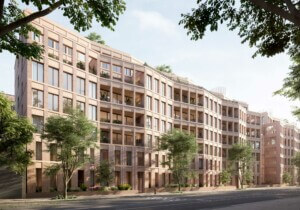One of the most talked-about towers in Brooklyn is being designed—and built—at the hands of Alloy Development, the 13-year-old company responsible for residential structures like 185 Plymouth Street and One John Street in DUMBO. Led by CEO and founder Jared Della Valle and president AJ Pires, the firm has its sights set next on two projects along Flatbush Avenue in Boreum Hill—one of them which would become among the tallest skyscrapers in Brooklyn. These major developments are advancing their goal of shaping the real estate conversation in New York towards a more design- and community-centric outlook. They’re literally restructuring the skyline of the city’s most populous borough one project at a time, for better or for worse.
But getting the chance to take on an 860-foot-tall building like the one Alloy is putting up at 80 Flatbush didn’t just happen overnight. When Della Valle and Pires first started Alloy in 2006, there were hardly any companies sporting the title of architect-developer. Architects stayed in one lane and developers stayed in another, but that didn’t stop Alloy from stepping into unknown territory.
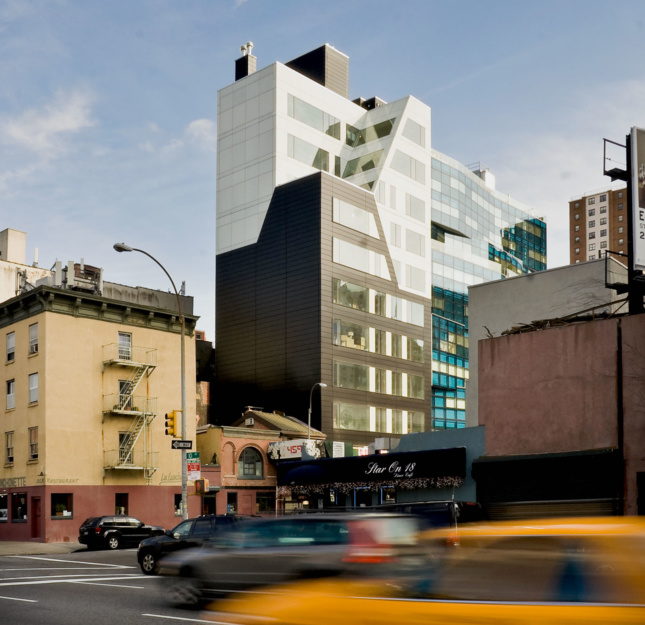
When the firm completed its distinctive 459 West 18th Street on the High Line, an 11-story residential structure with contrasting black-and-white, angular facade, both the design and real estate communities started to take notice. It wasn’t easy for Alloy to secure the millions of dollars needed for that in-demand site, but its success gave the company—then under the name Della Valle + Bernheimer—the confidence to do even bigger projects.
“We chose to pursue development as a way to have more agency over the process of design and to take control of the outcome,” said Della Valle. “When you can define program and priorities because you are taking on the risk and assembling all the capital, you get more design agency from every single perspective.”
In mid-2016 alongside co-developer Monadnock, Alloy completed One John Street, a glimmering, 12-story, 42-unit sustainable structure on the DUMBO waterfront just north of the Manhattan Bridge. The team considers it a major turning point for the company because of its integration into the local community. Though it’s a luxury residential property, it housed an outpost of the Brooklyn Children’s Museum for the last three years, and soon a Brooklyn Public Library annex will open in its stead.
From a design standpoint, One John Street was also a major step forward for Alloy. The firm teamed up with Brooklyn-based SITU Studio to create the one-of-a-kind sculptural panels made of concrete textured after fragments of fiberglass, pellets of beeswax, and salt granules that wrap the building’s lower core. In addition, because of the building’s noisy location next to an elevated train line, Alloy scaled up the windows and floors, decreasing the sun exposure at the same time.
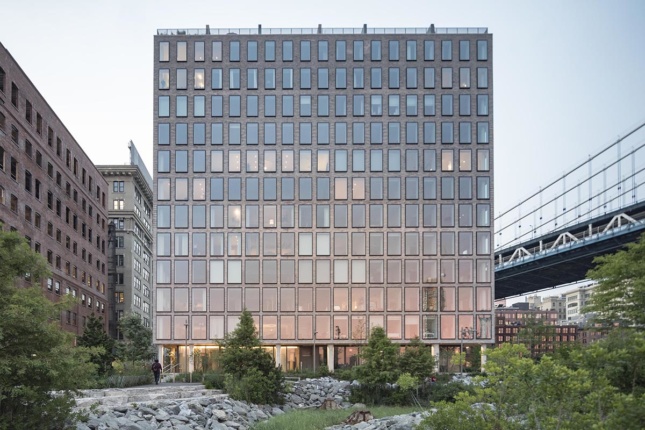
Challenging themselves with innovation at One John Street also gave Della Valle and Pires the authority to cement their names alongside New York’s top developers, and its completion gave them a seat at the table.
“I find it hysterical that now we are on the same panels as the very big guns of real estate in this city like Related and Extell who have existed for a long, long time,” said Della Valle. “On the architecture side, we’ve received a lot of admiration because we’ve made design a core value of our developments. We’re not interested in repeatability.”
Della Valle said that he’s met with plenty of famous architects who grill him on how Alloy makes it work. As a development company full of architects, he says the quality of the architecture and its impact on the community is most important. “We have to have economic output to achieve our work, but it’s not our reason for being.”
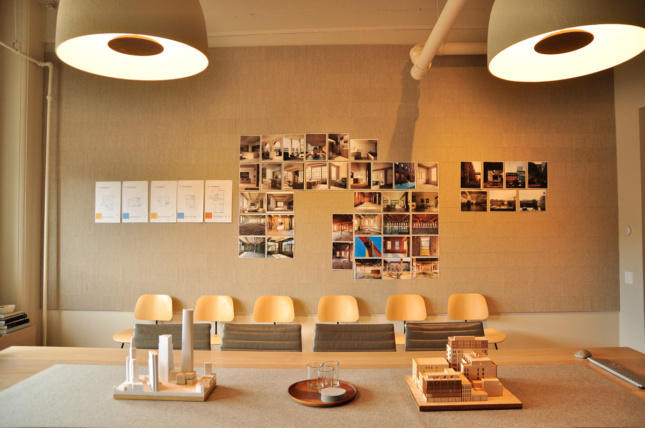
Alloy’s office is located at 20 Jay Street, a hotspot for many Brooklyn-based architecture firms because of the old building’s large floorplate. A small firm with just under 20 employees, the team has been based in the same space since 2001. On any given day, they’re only working on one or two projects at a time and don’t have to answer to any clients—ever. Things will continue to stay this way, according to Pires.
“Jared and I both live 100 feet from the office,” he said. “We’ve gotten to know every single landowner in DUMBO and there’s an intimacy of knowledge here that, when you connect it back to the risk equation, is very valuable. We’ve often had a leg up on other developers in this neighborhood because we’ve been here for so long.”

Alloy’s investment in DUMBO has long been clear and will continue with their upcoming three townhouses and 46 apartments at 168 Plymouth Street. Their proposal to take two, neighboring, century-old warehouses and turn them into condominiums was approved by the Landmarks Preservation Commission. It will be one of the last loft conversations in the area once finished next year. However, the East-River adjacent community isn’t the only part of Brooklyn that Pires and Della Valle aim to influence.
80 and 100 Flatbush will be the duo’s first attempt at a true high-rise development. The mixed-use skyscraper at 80 Flatbush will feature 200 units of affordable housing while the proposed 482-foot-tall tower at 100 Flatbush will include a 700-seat elementary and high school (designed by ARO) for Khalil Gibran International Academy, the first English-Arabic public school in the United States. Two historic buildings will also be preserved on the site. Demolition began in October.
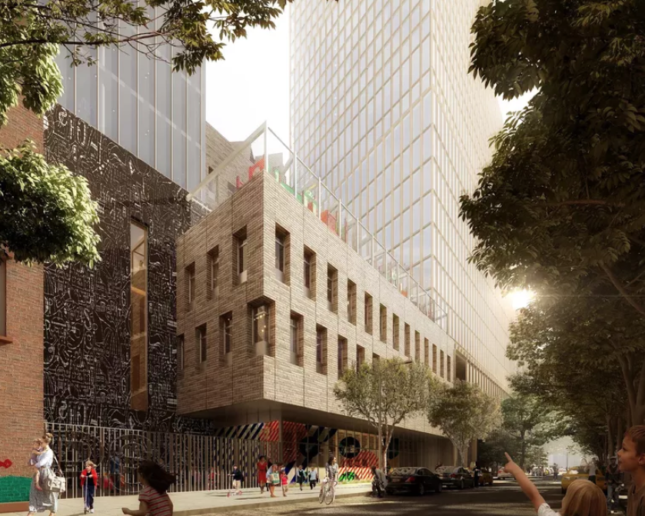
To go after such a massive property—the block is spread across 61,000-square feet—Alloy had to work with the city’s Education Construction Fund in planning all that the future site would entail. It’s an overwhelmingly complex project, but Della Valle and Pires see it as another decisive moment in Alloy’s own development. They’ve been able to reach this point, Pires said, because of that innate attraction to risk and their constant reliability.
“The exposure we’ve received on our past work gives us a lot of credibility,” he said. “We truly believe you have to be optimistic to be in development. The associated risk actually boosts our creativity and forces us to be more clever.”










